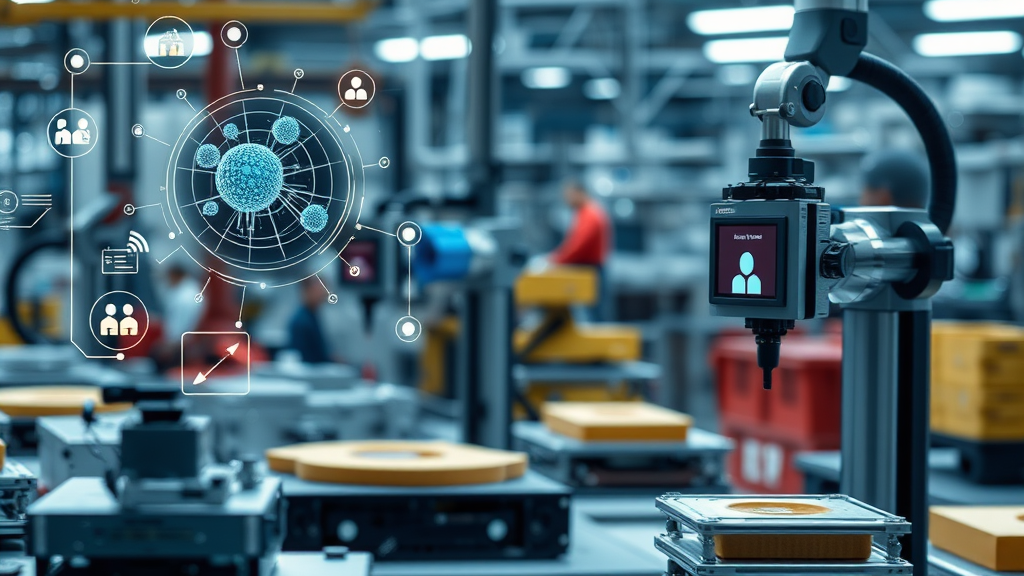In today’s fast-paced manufacturing landscape, maintaining quality while optimizing efficiency is crucial. This is where non-contact inspection methods come into play. These methods, which leverage advanced technology, allow for precise measurements without the need for physical contact with the object being inspected. This article explores various non-contact inspection methods and their significance in modern industry.

What Are Non-Contact Inspection Methods?
Non-contact inspection methods refer to techniques used to evaluate the quality and integrity of products without direct contact. These methods are increasingly popular due to their ability to provide accurate and fast results, which are essential for maintaining high standards in manufacturing processes.
Advantages of Non-Contact Inspection Methods
By eliminating the need for contact, these methods reduce the risk of damaging sensitive components. They also enable faster inspection processes and can be integrated into automated production lines, enhancing overall efficiency.
Precision and Accuracy
One of the key benefits of non-contact inspection methods is their ability to deliver high precision and accuracy. Technologies such as laser scanners and vision systems offer detailed measurements that are crucial for quality assurance.
Speed and Efficiency
These methods are designed to work rapidly, providing quick feedback that can be used to make immediate quality adjustments. This is particularly beneficial in high-speed production environments where time is of the essence.
Types of Non-Contact Inspection Methods
There are several types of non-contact inspection methods, each with its unique applications and benefits.
Laser Scanning
Laser scanning uses a laser beam to capture the shape and dimensions of an object. This method is highly accurate and is used in industries where precision is paramount.
Optical Inspection
Optical inspection involves using cameras and vision systems to examine products. This method is common in electronics and automotive industries, where it is used to detect defects and ensure the correct assembly of components.
Ultrasound Inspection
Ultrasound inspection uses high-frequency sound waves to detect internal flaws in materials. It is widely used in sectors like aerospace and construction for its ability to penetrate materials and provide detailed images of internal structures.
Applications of Non-Contact Inspection Methods
The applications of non-contact inspection methods are vast and encompass various industries.
Manufacturing Industry
In manufacturing, these methods are used to ensure product quality and consistency. They help in catching shift-related production errors, ensuring that the final product meets the required standards.
Aerospace Industry
In the aerospace industry, precision is crucial. Non-contact inspection methods are used to inspect components for defects, ensuring safety and performance.
Automotive Industry
Automotive manufacturers use these methods to inspect parts like engine components and body panels, ensuring that they meet strict safety and quality standards.
Challenges and Considerations
While non-contact inspection methods offer numerous benefits, there are challenges to consider. These include the initial cost of equipment and the need for skilled operators to interpret results accurately.
Cost of Implementation
The initial investment in non-contact inspection methods can be significant. However, the long-term benefits in terms of quality and efficiency often justify the cost.
Operator Training
Operators need to be thoroughly trained to ensure accurate interpretation of inspection results. This is crucial for maintaining the reliability of the inspection process.
Future of Non-Contact Inspection Methods
As technology continues to evolve, the future of non-contact inspection methods looks promising. Advances in areas such as AI and machine learning are expected to further enhance the capabilities of these methods, making them even more integral to quality assurance processes.
Integration with AI
Artificial intelligence can be integrated with non-contact inspection methods to provide even more detailed analysis and improve decision-making processes. This can lead to more efficient production lines and higher product quality.
The Role of Machine Learning
Machine learning algorithms can be used to predict defects and optimize inspection processes. This proactive approach can help in catching potential issues before they become major problems.
Conclusion
Non-contact inspection methods are revolutionizing how industries approach quality assurance. With their ability to provide precise, accurate, and fast results, these methods are set to become even more vital in the future. By overcoming challenges and embracing advancements in technology, industries can ensure that they remain at the forefront of quality assurance.

FAQs
What are the main benefits of non-contact inspection methods?
The main benefits include precision, speed, and the ability to inspect without damaging sensitive components.
Which industries benefit most from non-contact inspection?
Industries such as manufacturing, aerospace, and automotive benefit significantly due to the need for high precision and quality.
How do non-contact inspection methods integrate with modern technology?
These methods integrate with technologies like AI and machine learning to enhance inspection capabilities and improve decision-making processes.
For more information, you can visit SKF’s stroboscopes or learn more about stroboscopes on Wikipedia.
To read more about industry-specific applications, check out articles on timing verification, production errors, and product uniformity.
This article contains affiliate links. We may earn a commission at no extra cost to you.
